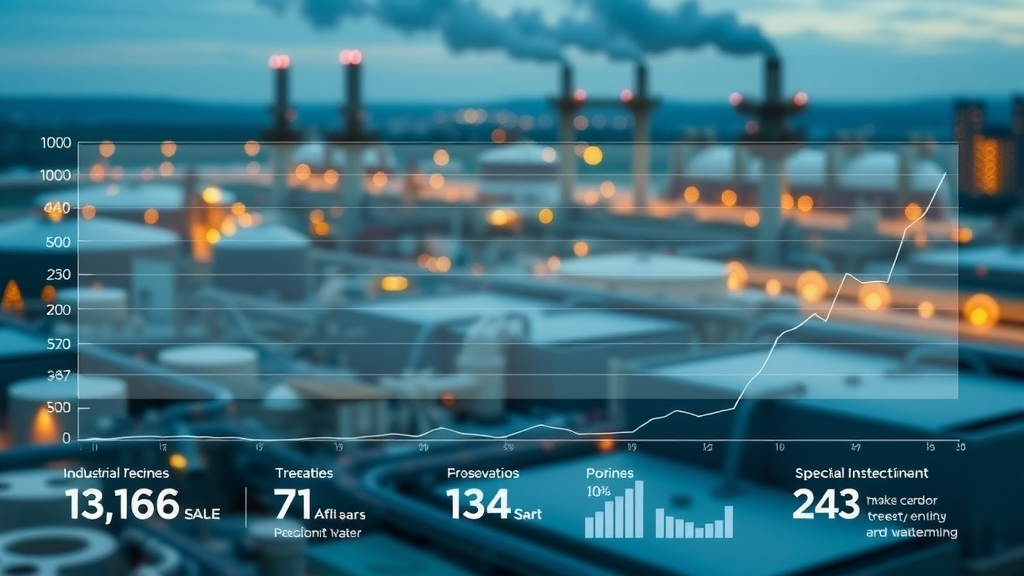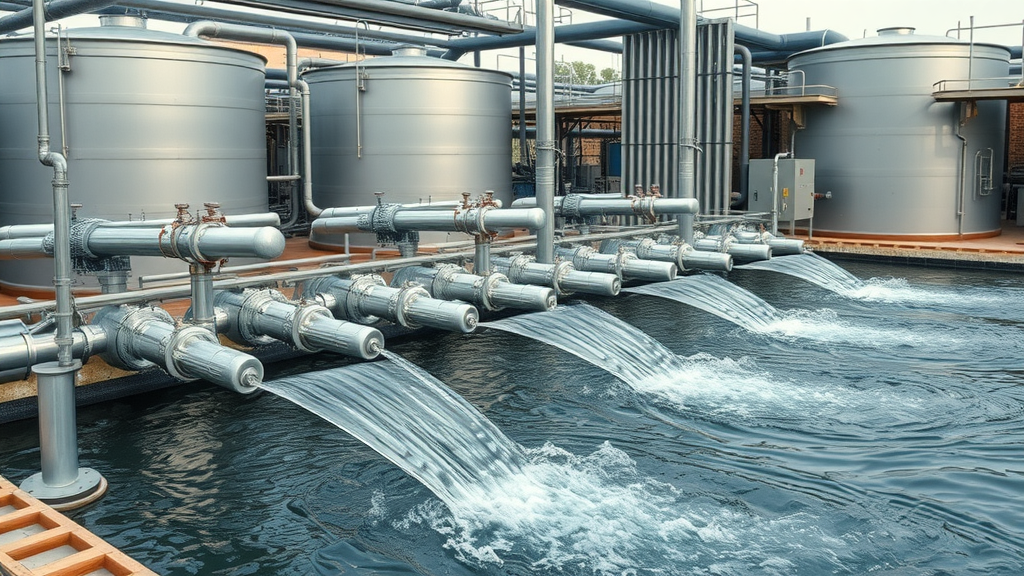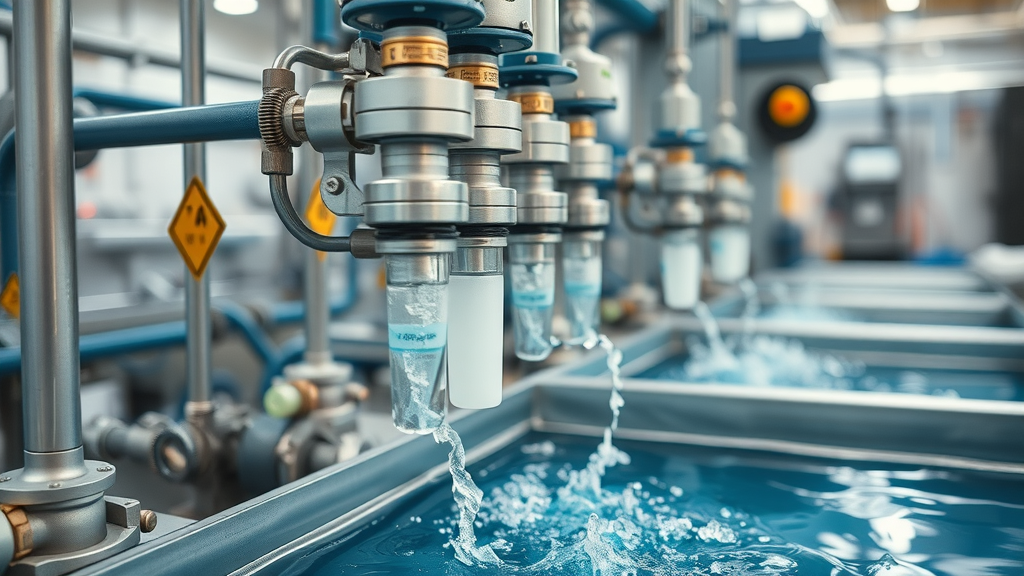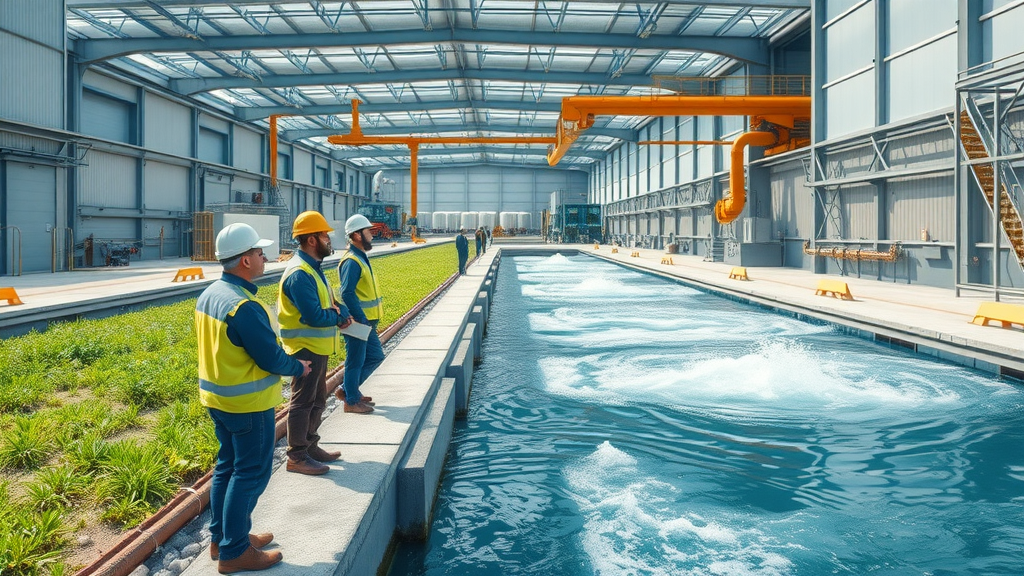Startling Fact: Did you know that despite rigorous federal regulations, counties like Los Angeles and Riverside impose even stricter local wastewater treatment standards, making compliance a complex and evolving challenge for industrial facilities? This dynamic landscape requires businesses to stay ahead with innovative treatment solutions and expert guidance.
Industrial wastewater treatment is more than just a regulatory obligation—it’s a crucial factor that affects operational continuity, environmental stewardship, and cost management. For plant managers and Environmental Health & Safety (EHS) professionals in California and beyond, understanding current industrial wastewater treatment trends can be the difference between compliance and costly penalties or shutdowns. This article dives into emerging technologies, key regulatory compliance tips, and real-world best practices presented by industry expert Steve Manny of CSI Environmental, Inc.
Startling Facts About Industrial Wastewater Treatment Trends

Industrial wastewater treatment is increasing in complexity due to rising volumes of industrial discharge combined with more stringent regulatory oversight. Across the United States, industries generate billions of gallons of wastewater annually, containing contaminants such as fats, oils, grease (FOG), chemical oxygen demand (COD), biochemical oxygen demand (BOD), total suspended solids (TSS), and sulfides. These constituents are not only harmful to the environment if untreated but also frequently cause compliance issues at local wastewater treatment districts.
Emerging statistics reveal that cities and counties are imposing tougher local standards that surpass federal mandates, particularly in California’s Los Angeles and Riverside counties. This creates an urgent need for industry players to adapt with innovative treatment processes, stringent monitoring, and proactive compliance strategies.
Overview of Industrial Wastewater Treatment Trends and Regulatory Compliance
Steve Manii of CSI Environmental explains, "The federal mandate is the baseline, but counties like LA and Riverside can impose stricter standards, making compliance a dynamic challenge for industries."

Industrial wastewater treatment trends are shaped by an evolving regulatory ecosystem. The Clean Water Act provides the federal framework, setting baseline discharge limits that all industrial operations must follow. However, states and municipalities can enforce more rigorous local regulations. For example, Los Angeles County and Riverside County each have their own enhanced criteria, meaning industries often navigate a patchwork of local rules in addition to federal law.
These regulations govern critical parameters such as COD, BOD, TSS, pH, and sulfides. Industries found in violation of permit limits through composite sampling or grab samples face escalating consequences starting with written warnings, followed by compulsory action plans and retesting, as Steve Manny details. Early detection and resolution of these issues can prevent costly fines and operational interruptions.
Key Compliance Parameters: COD, BOD, TSS, pH, and Sulfides
The main pollutants targeted by regulatory agencies focus on Chemical Oxygen Demand (COD) and Biochemical Oxygen Demand (BOD), which indicate organic pollutant levels in wastewater. Total Suspended Solids (TSS) represent particulate matter suspended in discharge streams, while pH must stay within prescribed acidic to alkaline limits to avoid environmental harm.
Sulfides present a special challenge as they often originate from the bottom of tanks and pipes and can spike unexpectedly during cleaning or maintenance events. Understanding these metrics and maintaining them within compliance limits is critical to passing regulatory inspections and avoiding intervention.
Common Compliance Challenges in Industrial Wastewater Treatment

According to Steve Manii, "Abnormal occurrences such as deep tank cleaning can cause temporary spikes in sulfide levels, which must be clearly communicated to regulatory agencies."
Industries frequently encounter challenges caused by operational fluctuations that impact wastewater quality. One frequent example is deep tank cleaning, where accumulated sulfides are disturbed and flushed into discharge lines, causing non-compliance spikes in sulfide levels. Such “abnormal occurrences” require detailed documentation and transparent communication to regulators to explain temporary deviations from normal discharge profiles.
Failing to address these inconsistencies promptly can initiate a chain of enforcement actions. Steve Manny emphasizes this point, explaining that after a warning letter is issued for non-compliance, businesses must provide an action plan and execute corrective measures promptly. These efforts often involve retesting and ongoing monitoring to demonstrate improvements and regain compliance status.
The Compliance Notification and Action Plan Process

When an industrial facility falls out of compliance, the enforcement process typically begins with a 24-hour composite sample identifying constituents exceeding permitted limits. The regulatory agency issues a written notification detailing the violations and requiring a corrective action plan outlining how the facility intends to resolve and prevent future violations.
Once the action plan is submitted, retesting becomes mandatory. If violations persist through subsequent sampling, more severe consequences follow, including fines, public disclosure of non-compliance, and potential suspension of operations. This escalation underscores the importance of understanding the notification process and acting swiftly to remediate any issues.
Innovative Treatment Systems and Technologies in Industrial Wastewater Treatment
Cost-Effective Solutions for Sulfide and TSS Reduction

Steve Manii of CSI Environmental states, "Injecting 12.5% chlorine or hydrogen peroxide into the effluent line is an effective way to neutralize sulfides and maintain compliance."
Modern industrial wastewater treatment increasingly incorporates chemical dosing systems to target specific problematic constituents like sulfides and suspended solids cost-efficiently. Treatments such as injecting chlorine or hydrogen peroxide act as oxidizers to neutralize sulfides before discharge, reducing pollutants and ensuring permit limits are met consistently.
Similarly, physical separation techniques and advanced filtration equipment can substantially lower TSS, COD, and BOD concentrations. CSI Environmental often customizes these solutions to fit specific industrial processes, helping clients achieve improved compliance while controlling treatment costs. These innovations represent significant advances in maintaining sustainable wastewater quality within regulatory limits.
Benefits of Water Reuse for Industrial Facilities

Water scarcity and environmental concerns have made sustainable water reuse a vital trend in industrial wastewater treatment. Reusing treated wastewater reduces freshwater demand, lowers discharge volumes, and enhances long-term sustainability. Facilities adopting water reuse technologies gain operational resilience while reducing environmental footprints.
Besides environmental benefits, water reuse often results in substantial cost savings on water procurement and discharge surcharges. Integrating efficient treatment systems with water recycling strategies allows facilities to maximize resource utilization. This aligns with global trends toward circular water economies within industrial processes.
Market Size and Growth of Industrial Wastewater Treatment

Region |
Application |
Forecast Growth 2025-2030 |
Key Drivers |
Emerging Technologies |
|---|---|---|---|---|
North America |
Chemical & Pharmaceutical |
8.5% CAGR |
Regulatory pressure, increasing industrialization |
Membrane bioreactors, Advanced Oxidation Processes |
Europe |
Food & Beverage |
7.2% CAGR |
Water reuse mandates, stricter discharge limits |
Biological treatment, Electro-coagulation |
Asia-Pacific |
Metals & Mining |
10.1% CAGR |
Rapid industrial growth, focus on sustainability |
Zero-liquid discharge, Nanofiltration |
Latin America |
Oil & Gas |
6.8% CAGR |
Regulatory advancement, investment in infrastructure |
Chemical dosing systems, Flotation technologies |
Expert Insights and Best Practices from CSI Environmental
Steve Manii advises, "Early engagement with experts and thorough review of lab reports can prevent costly fines and operational disruptions."
Steps to Take When Facing Compliance Issues

For facilities facing compliance challenges, quick and informed action is essential. According to Steve Manny of CSI Environmental, the first step is to collect and review relevant lab reports from the past 3 to 6 months, including third-party analyses and notices from regulatory bodies. These documents provide a clear picture of the specific compliance issues and their frequency.
Following this, engaging with a specialized consultant can streamline the process of identifying root causes and implementing efficient corrective measures. CSI Environmental offers comprehensive support including compliance action planning, equipment recommendations, chemical treatment options, and ongoing liaison with regulatory agencies. This hands-on approach helps customers achieve compliance faster while improving operational efficiency.
Common Mistakes and Misconceptions in Industrial Wastewater Treatment

One common misconception is treating wastewater compliance solely as a regulatory burden rather than an integrated operational priority. Facilities sometimes underestimate factors such as temporary operational changes or cleaning activities that can drastically affect discharge quality, leading to unexpected violations.
Another mistake is delaying engagement with experts until fines or shutdown threats arise. Proactive monitoring, transparent communication with regulators, and early consultation with wastewater treatment professionals like CSI Environmental dramatically reduce risk and cost. Understanding the nuances of treatment processes and permit requirements is vital.
Actionable Tips for Industrial Wastewater Treatment Compliance
Maintain regular monitoring and documentation of wastewater parameters to catch issues early.
Engage with third-party experts like CSI Environmental early in the compliance process for tailored technical guidance.
Implement cost-effective treatment technologies such as chemical oxidizers and filtration systems matched to your wastewater profile.
Communicate transparently with regulatory agencies about operational anomalies to avoid misunderstandings.
Leverage water reuse strategies to enhance sustainability and reduce operational costs.
People Also Ask: Industrial Wastewater Treatment FAQs
What are the main causes of non-compliance in industrial wastewater treatment?
Non-compliance often results from elevated levels of sulfides, COD, BOD, TSS, or pH imbalances, typically due to process upsets, seasonal variations, or maintenance activities like tank cleaning. Lack of timely corrective actions or inadequate treatment systems also contribute.
How can companies effectively respond to compliance notices?
Effective response includes promptly reviewing lab results, submitting a detailed action plan to regulators, implementing corrective measures such as chemical dosing or equipment upgrades, and scheduling retesting to verify resolution. Early expert consultation accelerates this process.
What innovative technologies are trending in industrial wastewater treatment?
Current trends include chemical oxidizer dosing (chlorine, hydrogen peroxide), membrane bioreactors, advanced filtration, biological treatment systems enhanced by enzymes and microbes, and zero-liquid discharge technologies. Integration with sustainable water reuse is also growing.
Key Takeaways on Industrial Wastewater Treatment Trends
Compliance with evolving regulations is critical to avoid fines and operational shutdowns.
Innovative treatment systems can significantly reduce pollutants like sulfides and TSS.
Sustainable water reuse is becoming a vital component of wastewater management.
Expert consultation accelerates problem resolution and cost savings.
Understanding market trends helps businesses stay competitive and compliant.
Conclusion: Embracing Innovation and Expertise in Industrial Wastewater Treatment
Act now by partnering with wastewater experts and adopting innovative treatment technologies to secure compliance, reduce costs, and support sustainable industrial operations.
Get Your FREE Compliance Assessment Today
Take the first step toward compliance and cost savings by contacting CSI Environmental for a free assessment. Visit https://csienvironmentalinc.com/California-Wastewater-Compliance or call (800) 690-2436 to schedule your consultation.
To enhance your understanding of industrial wastewater treatment trends, consider exploring the following authoritative resources:
“Industrial Wastewater Treatment Market Size to Hit USD 34.11 Bn By 2034”: This report delves into the development of smart wastewater treatment technologies and decentralized solutions, highlighting how digital integration enhances efficiency and monitoring capabilities. (precedenceresearch.com)
“Top 7 Trends in Industrial Wastewater Treatment Equipment”: This article outlines key advancements such as membrane technologies, automation, IoT integration, and energy-efficient equipment, providing insights into the evolving landscape of wastewater treatment. (verifiedmarketreports.com)
These resources offer valuable perspectives on the latest innovations and best practices in industrial wastewater treatment, equipping you with the knowledge to navigate this complex and evolving field.
 Add Row
Add Row  Add
Add 




Write A Comment